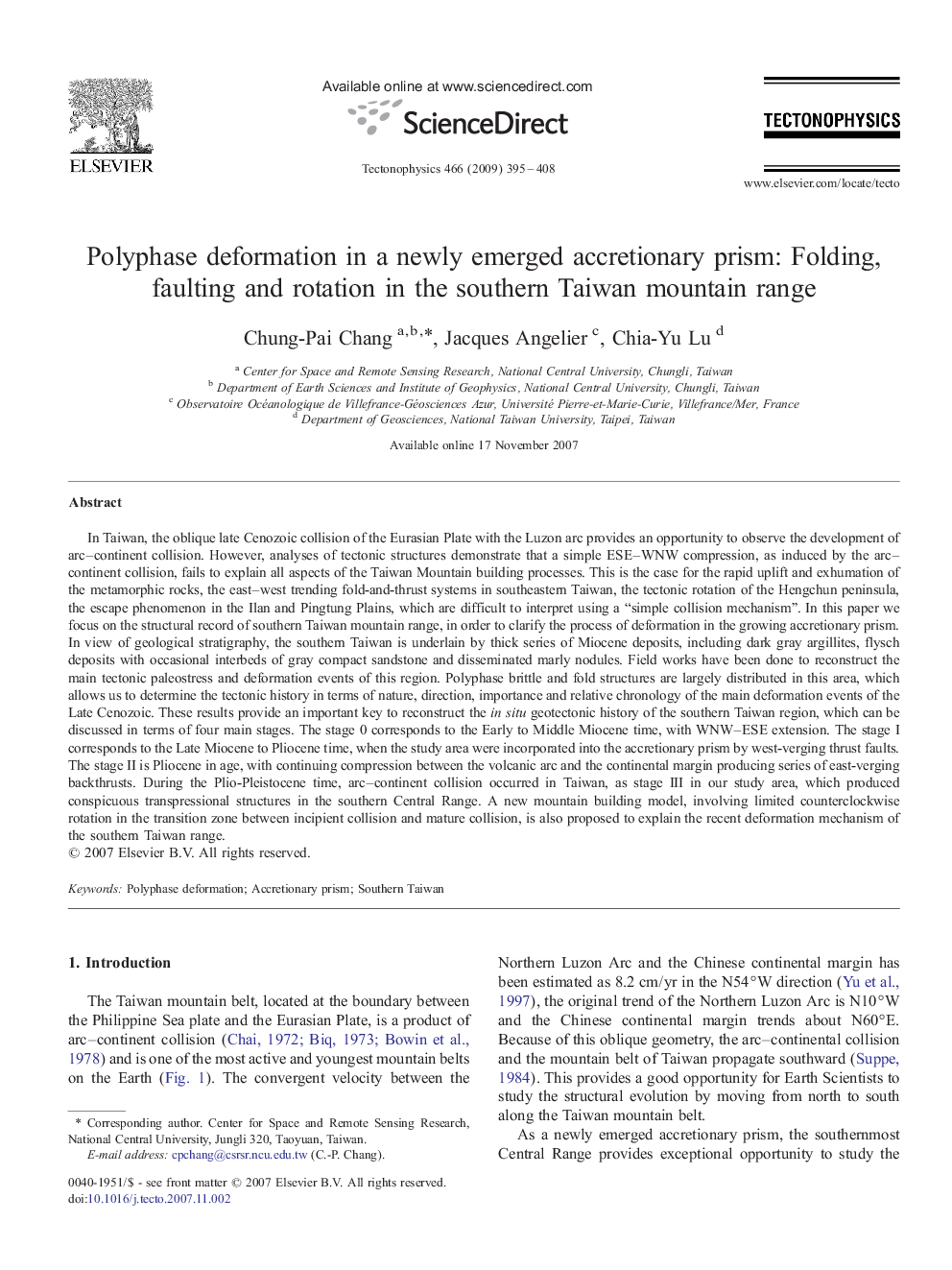| کد مقاله | کد نشریه | سال انتشار | مقاله انگلیسی | نسخه تمام متن |
|---|---|---|---|---|
| 4694263 | 1636898 | 2009 | 14 صفحه PDF | دانلود رایگان |

In Taiwan, the oblique late Cenozoic collision of the Eurasian Plate with the Luzon arc provides an opportunity to observe the development of arc–continent collision. However, analyses of tectonic structures demonstrate that a simple ESE–WNW compression, as induced by the arc–continent collision, fails to explain all aspects of the Taiwan Mountain building processes. This is the case for the rapid uplift and exhumation of the metamorphic rocks, the east–west trending fold-and-thrust systems in southeastern Taiwan, the tectonic rotation of the Hengchun peninsula, the escape phenomenon in the Ilan and Pingtung Plains, which are difficult to interpret using a “simple collision mechanism”. In this paper we focus on the structural record of southern Taiwan mountain range, in order to clarify the process of deformation in the growing accretionary prism. In view of geological stratigraphy, the southern Taiwan is underlain by thick series of Miocene deposits, including dark gray argillites, flysch deposits with occasional interbeds of gray compact sandstone and disseminated marly nodules. Field works have been done to reconstruct the main tectonic paleostress and deformation events of this region. Polyphase brittle and fold structures are largely distributed in this area, which allows us to determine the tectonic history in terms of nature, direction, importance and relative chronology of the main deformation events of the Late Cenozoic. These results provide an important key to reconstruct the in situ geotectonic history of the southern Taiwan region, which can be discussed in terms of four main stages. The stage 0 corresponds to the Early to Middle Miocene time, with WNW–ESE extension. The stage I corresponds to the Late Miocene to Pliocene time, when the study area were incorporated into the accretionary prism by west-verging thrust faults. The stage II is Pliocene in age, with continuing compression between the volcanic arc and the continental margin producing series of east-verging backthrusts. During the Plio-Pleistocene time, arc–continent collision occurred in Taiwan, as stage III in our study area, which produced conspicuous transpressional structures in the southern Central Range. A new mountain building model, involving limited counterclockwise rotation in the transition zone between incipient collision and mature collision, is also proposed to explain the recent deformation mechanism of the southern Taiwan range.
Journal: Tectonophysics - Volume 466, Issues 3–4, 10 March 2009, Pages 395–408